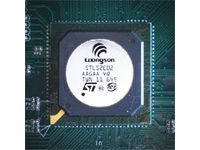China to Challenge Intel at Chipmaking
China, now more than ever, wishes to become technology independent. Following the nation’s impressive show to the world at the summer Olympics in Beijing, China hopes to continue its rise.
Already producing its own automobiles, China is looking to the next industrial area for growth – technology. In particular, there is a specific reason that China is looking to make its own CPUs, and that’s because current U.S. laws prohibit the export of state-of-the-art microprocessors into certain nations. China is now looking to design its own chips so that it will not have to use generations-old hardware.
"Twenty years ago in China, we didn’t support R&D for microprocessors," said Zhiwei Xu, deputy director of the Chinese Academy of Sciences’ Institute of Computing Technology (ICT), according to Technology Review. "The decision makers and [Chinese] IT community have come to realize that CPUs [central processing units] are important."
The Chinese Academy of Sciences’ Institute of Computing Technology started design of China’s first general-purpose CPU in 2001, with the single-core chip named Godson-1 emerging the year after. The Godson-2 lived throughout 2003 to 2006, with each iteration faster than the last.
While the Godson chips are Chinese designed, they are actually manufactured by ST Microelectronics and can be bought under the commercial name of Loongson.
Like the rest of the CPU world, the next step is in multiple cores. Xu revealed during a presentation at last week’s Hot Chips conference in Palo Alto that the Godson-3 will contain four cores and is slated for completion sometime in 2009. An eight core version is also in the works, with the design currently planned for a 65nm process.
The Godson-3 is to be scalable, with more cores easily added without significant changes in design, and contain power-saving features.
Get Tom's Hardware's best news and in-depth reviews, straight to your inbox.
Perhaps the biggest upgrade for the Godson-3 is the 200 addition instructions that will allow the Chinese chip to run x86 code. The upcoming chip hopes to dodge any license fees for Intel, as the Godson-3 will only simulate the x86 architecture.
Because of this setup, Intel patent attorney Erik Metzger believes that the Godsend-3 will only perform at 80 percent of the speed of a native x86 chip. Understandably, Intel is keeping a close eye on its x86 patents and the work of the ICT.
-
No doubt copied off intel and AMD's designs, just like they copy our software for free and use it like shareware.Reply
-
jrabbitb THIS IS NOT A GOOD THING. We have a huge market in china for selling american company product and we have it locked out?!?!?! Here's an idea, open up the market and put intel, amd, and via (who forgot about via? ) and let us get some of the money back that we are barrowing from china to stay afloat as a country. btw, typing in the box in chrome is messed up. cant go back and edit very easily, refresh isn't working correctly.Reply -
in the last paragraph, you wrote "believes that the Godsend-3 " I believe that is a different movie. Greetings from MexicoReply
-
Yes, why on earth aren't we exporting technology to China? For cryin' out loud, we're wasting enough of our money on cheap Chinese junk, supporting their booming economy, while our economy is tanking. Let them buy decent technology from us so they can use it to make stuff that's actually worth buying. Just think, if AMD could get into that market ahead of Intel, they might actually be able to make a fast turnaround in sales volume, which would make for a more even playing field in the processor wars. The healthier the competition, the better off everybody is.Reply
-
lobhob I really don't care they will only run a 1 ghz per core, also this is no competition for AMD and Intel because they are at least 5 years behind in architecture complexity which can shoot out better n better performance.Reply -
squiZZ im down for some chinese competition. Hell at the rate they're developing, they will be hot on Intel's heels forcing em to cook up some great processors.Reply -
"Already producing its own automobiles"Reply
Have any of you guys actually seen what Chinese automobiles look like? The quality is horrendous, they come from the factory with visible defects on the body, LOL. I thought people were just talking shit about China until I saw pictures of it. In the likely event that they rip-off either AMD or Intel designs, the CPUs could be decent.

